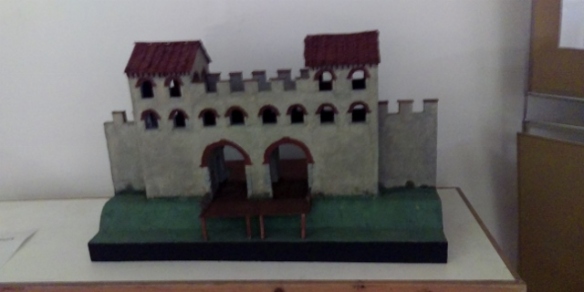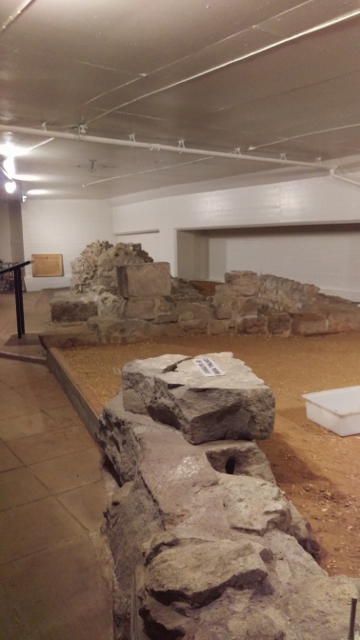I spent last weekend at a three-day property symposium at the Birmingham NEC.
I had travelled up to Birmingham on Thursday night to make sure I got checked-in and unpacked ready to start Friday morning. If you’ve been following UK news reports over the last few weeks, you’ll know that the weather here has been a little different from what we are used to so as I was greeted by bone-chilling wind and swirling snow on arrival, I bailed on the planned walk to the hotel and jumped in a cab. As we trundled carefully along the icy dark roads, I had no idea how I was going to find my way back in the morning.
It stayed icy for the next three days so each morning I’d layer up like a pass-the-parcel prize – jumper over long sleeve top over singlet, wool tights under jeans, thick socks under sensible walking boots all topped off with my warmest snow-coat and beanie. I’d walk around the corner to the Drop and Go at the Airport and get a cab to the exhibition centre. Then I’d reverse the process each evening.
After three long and full days, I was both buzzing and completely spent. Mercifully my trip back to London on Sunday night went smoothly and when I got home, I dropped my bags inside the front door and crawled happily into my own bed. That meant I spent Monday sorting myself out. I tackled several loads of laundry, a pile of unopened post and the stream of unread emails. I planned my week, allocating time in my calendar to prepare for things coming up and to follow up on all of the to-dos from the weekend.
I was beavering away when the doorbell rang. I get a lot of people ringing the doorbell during the day trying to sell their charities, ideas, political affiliations, etc. and if I’m not expecting anyone, I don’t answer the door. But when the bell rang a second time, gut instinct told me I should see who was there.
Look at what the nice man at the door delivered!

It was veritable cornucopia of Aussie delights. Burger Rings, Twisties – both chicken- and cheese-flavoured ones – a bag each of chocolate and liquorice bullets and Caramello Koalas, and two each of Crunchie and Cherry Ripe chocolate bars. Yippee!
As I was reverently unpacking it all and exclaiming over each nostalgic favourite, I found something more.


Yes! My very own super-sized packet of Tim Tams!
In lieu of my being Down Under for Christmas, it seems that my sister (Lil Chicky) had taken it upon herself to deliver a little bit of Down Under to the UK, gathering a whole lot of my favourite Aussie snacks and sending them across the sea. And the timing was perfect, taking me back to our time in Paris together and reminding me why I’m launching myself into the world of property investing.
Back in November, I had just completed my three-day basic property training and had committed to a two-year elite mentoring and training program. I knew nothing about property but I did know that I wanted to build a different financial future for myself. One that would give me some choices about how I spend my time in the years ahead – whether that’s in having the freedom and security to choose a job that I love and that fulfils me, building a portfolio career through contracting and non-executive director roles or pursuing some of my personal passions in education, mental health and travel.
We’d had about three weeks notice of her trip and between her getting on several planes and me whizzing across the channel on Eurostar, we’d managed to rendezvous in the Latin Quarter, make our plans and soak up as much as two erstwhile Australians ambling through the last shreds of Autumn in Paris could manage.
We were sitting on the top deck of the Hop-On-Hop-Off bus on our first morning. It was dry, blue-skied and quite sunny yet the wind was icy – but the top deck is the best place for photographs so we had wrapped ourselves in beanies and scarves and taken our seats upstairs.
I was watching her take photos, leaning to get the best angles as the bus tootled around the sights and I had a thought that stopped me in my tracks: I could not have done this if I’d been working. With three weeks notice, I might have managed to wangle a three-day weekend, working my tail off to get things done beforehand and planning the trip at the same time. But my mind would have been filled with everything I hadn’t quite managed to get done before I left and wondering what would be waiting for me when I got back.
Instead there I was, my ears warm and toasty under my new beanie and the tip of my nose red with cold, completely present and hanging out with one of my favourite people on the planet. It was a moment of pure joy…and also one of clarity. I found myself thinking, ‘moments like this are what I want my life to be about’. To spend it with the people that matter most to me, to make a difference in what I do and to invest time in the things I’m passionate about.
The moment was brief and poignant – and it has stayed with me. Over the last couple of months, I have embarked on my property journey in earnest, preparing my strategy, travelling to investigate a number of investment areas, building my network of contacts, researching the people I need in my power team right up to attending last weekend’s Symposium and booking my first viewings for later this week.
All new and scary things to me.
And what keeps me pushing forward are my reasons why, the very ones that were delivered in a moment of blinding clarity on the top deck of a tourist bus in Paris.

































